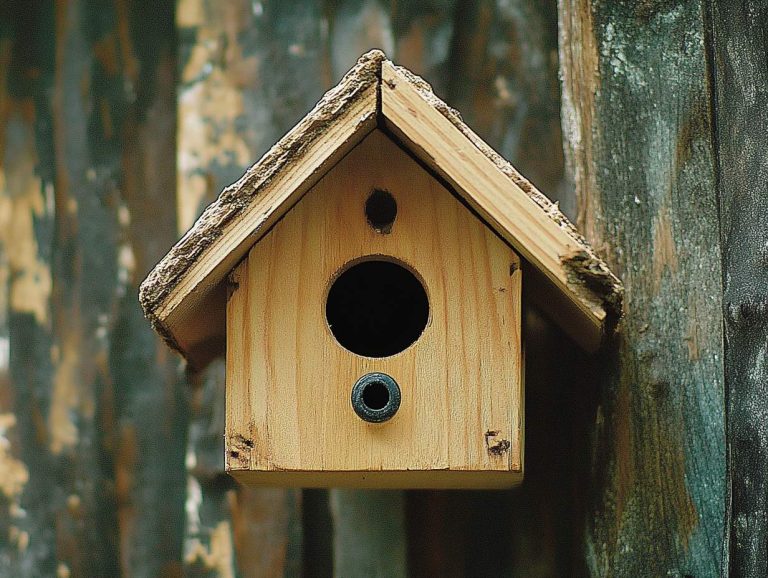Monstera Plant Care Guide – Everything You Need to Know
The Monstera plant, commonly known as the Swiss Cheese Plant, is a favorite among indoor plant lovers. Its large, fenestrated leaves and easy-care nature make it a top choice for both beginners and experienced plant owners. This tropical beauty not only adds a lush, jungle-like vibe to any space but also purifies the air.
In this comprehensive guide, we’ll cover everything you need to know about growing and maintaining a thriving Monstera plant.
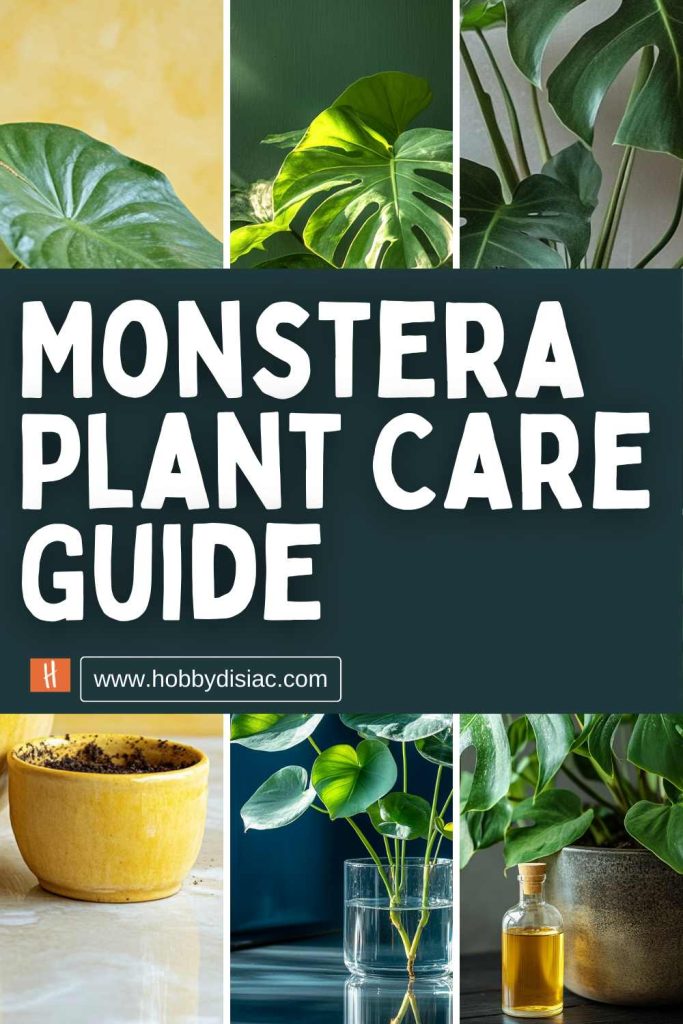
1. Understanding the Monstera Plant
1.1 What is a Monstera?
Native to the tropical rainforests of Central and South America, the Monstera is a climbing plant that develops aerial roots to attach to trees and other surfaces. Its most distinctive feature is its large, split leaves, which develop fenestrations (holes or splits) as the plant matures.
1.2 Popular Monstera Varieties
The Monstera genus includes several stunning varieties, each with unique characteristics that make them stand out in the plant world. While Monstera deliciosa is the most well-known species, other types also offer distinct leaf shapes, growth patterns, and care requirements. Here’s a closer look at some of the most popular Monstera varieties:
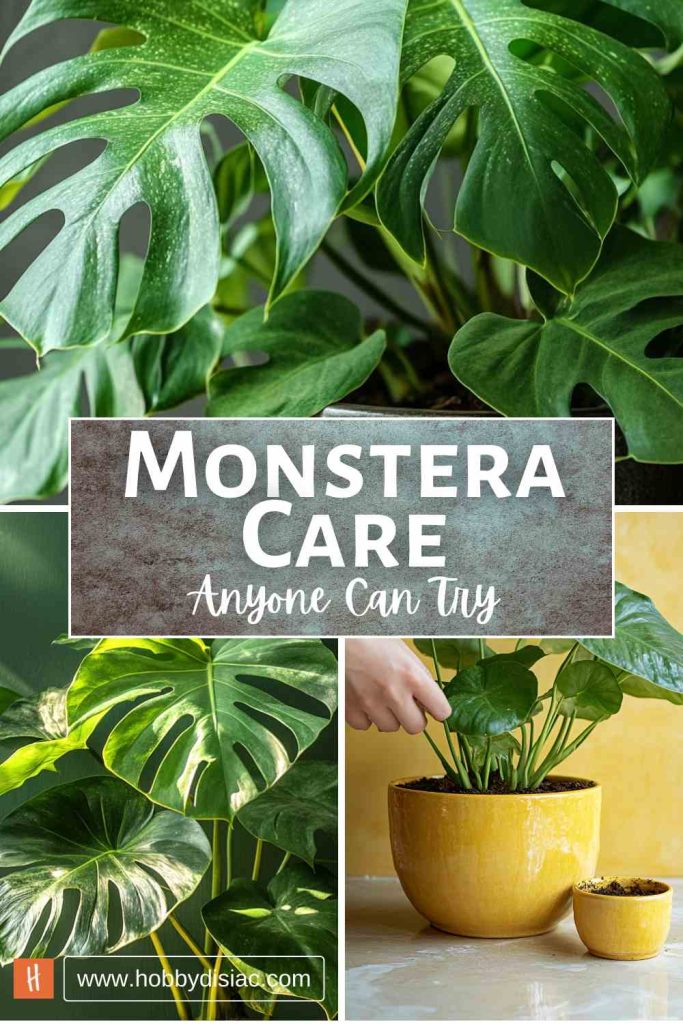
1. Monstera deliciosa (Swiss Cheese Plant)
- The most common and widely recognized variety.
- Features large, glossy green leaves that develop fenestrations (natural splits and holes) as they mature.
- Can grow several feet tall, making it a stunning statement plant for indoor spaces.
- Prefers bright, indirect light and a humid environment to thrive.
2. Monstera adansonii (Monkey Mask Monstera)
- Smaller in size than Monstera deliciosa, with thinner, heart-shaped leaves.
- Its leaves have multiple holes (fenestrations), but they do not split at the edges like Monstera deliciosa.
- Grows as a vine, making it ideal for hanging baskets or climbing on a moss pole.
- Requires regular watering and thrives in high humidity.
3. Monstera obliqua (Ultra-Rare Monstera)
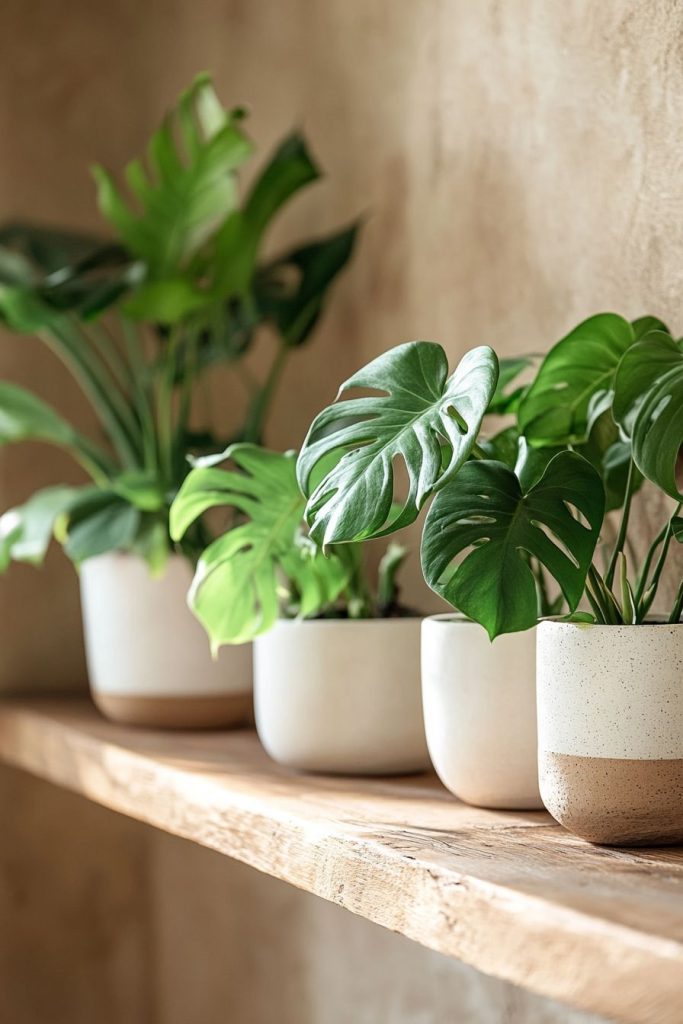
- One of the rarest and most delicate Monstera species.
- Known for its extremely thin, papery leaves with large holes, sometimes covering 90% of the leaf surface.
- Very difficult to care for due to its high humidity and warmth requirements.
- Mostly found in botanical gardens or private collections rather than in homes.
4. Monstera dubia (Shingle Plant Monstera)
- A unique variety that grows flat against surfaces (known as “shingling”).
- Juvenile leaves are small and heart-shaped with silver variegation; mature leaves develop splits.
- Prefers a support structure like a wooden board or tree bark to climb naturally.
- Grows best in warm, humid environments with moderate to bright indirect light.
5. Monstera siltepecana (Silver Monstera)
- Features long, lance-shaped leaves with silvery-gray streaks on the surface, making it stand out from other Monsteras.
- Can be grown as a trailing plant or trained to climb for larger leaf development.
- Requires well-draining soil, moderate watering, and high humidity for optimal growth.
- As it matures, the leaves become darker green and may develop slits similar to Monstera deliciosa.
Each Monstera variety has its own distinctive beauty and growth habits, making them excellent choices for plant enthusiasts who want to explore different looks within the same plant family. Whether you prefer big, dramatic leaves or delicate trailing vines, there’s a Monstera species for every indoor garden!
2. Ideal Growing Conditions for Monstera
2.1 Light Requirements
Proper lighting is essential for a Monstera’s healthy growth, large leaves, and distinctive fenestrations (natural holes and splits). These tropical plants naturally grow under dappled sunlight in rainforests, where they receive filtered light through the tree canopy.
Best Light Conditions for Monstera
- Bright, indirect sunlight is ideal. Place the plant near a north or east-facing window for soft, consistent light.
- If using a south or west-facing window, position the plant a few feet away or use a sheer curtain to diffuse direct rays.
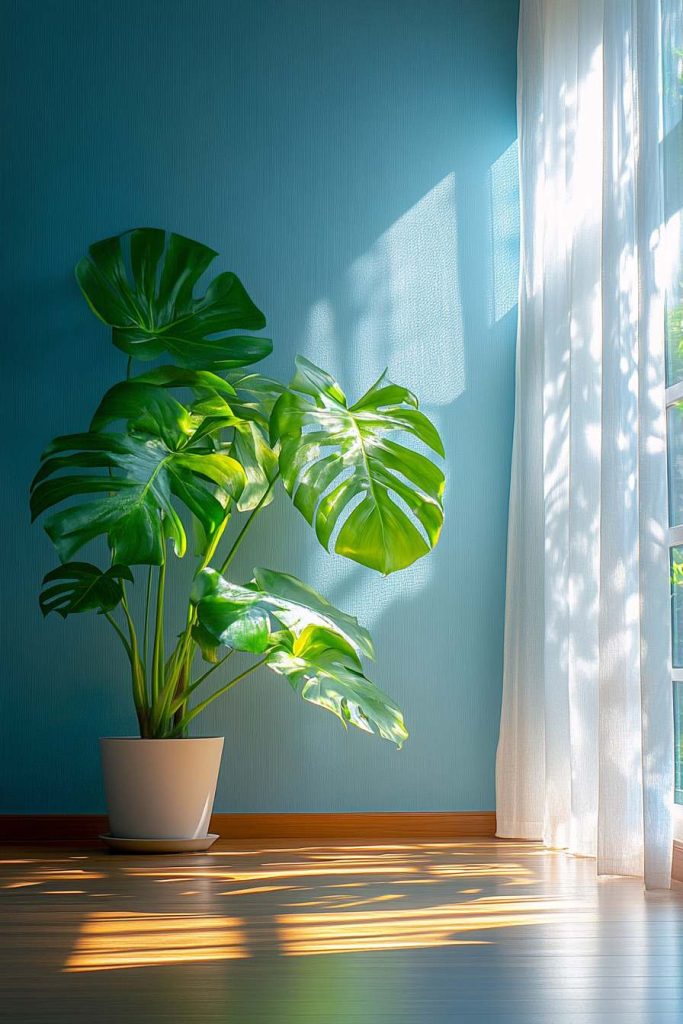
Low Light Tolerance
- Monsteras can survive in low-light conditions, but growth will slow, and the leaves may develop fewer fenestrations.
- In low light, leaves may also grow smaller and stretch toward the light, leading to leggy growth.
What to Avoid
🚫 Direct Sunlight: Can cause leaf burn, appearing as brown, crispy patches.
🚫 Too Little Light: Can result in droopy, pale leaves and weak stems.
Artificial Lighting for Indoor Monsteras
- If natural light is limited, use full-spectrum LED grow lights to supplement.
- Position grow lights 12-24 inches above the plant and keep them on for 8-12 hours daily.
By providing the right balance of bright, indirect light, your Monstera will thrive, producing lush, vibrant leaves with stunning splits!
2.2 Temperature & Humidity Needs
Monsteras thrive in warm, humid conditions, similar to their native tropical rainforests. Keeping the right temperature and humidity ensures healthy growth and fenestrated leaves.
Ideal Temperature
- Best range: 65-85°F (18-29°C).
- Avoid temperatures below 50°F (10°C), which can slow growth.
- Keep away from cold drafts (AC, open windows) and heat sources (radiators, direct sun exposure).
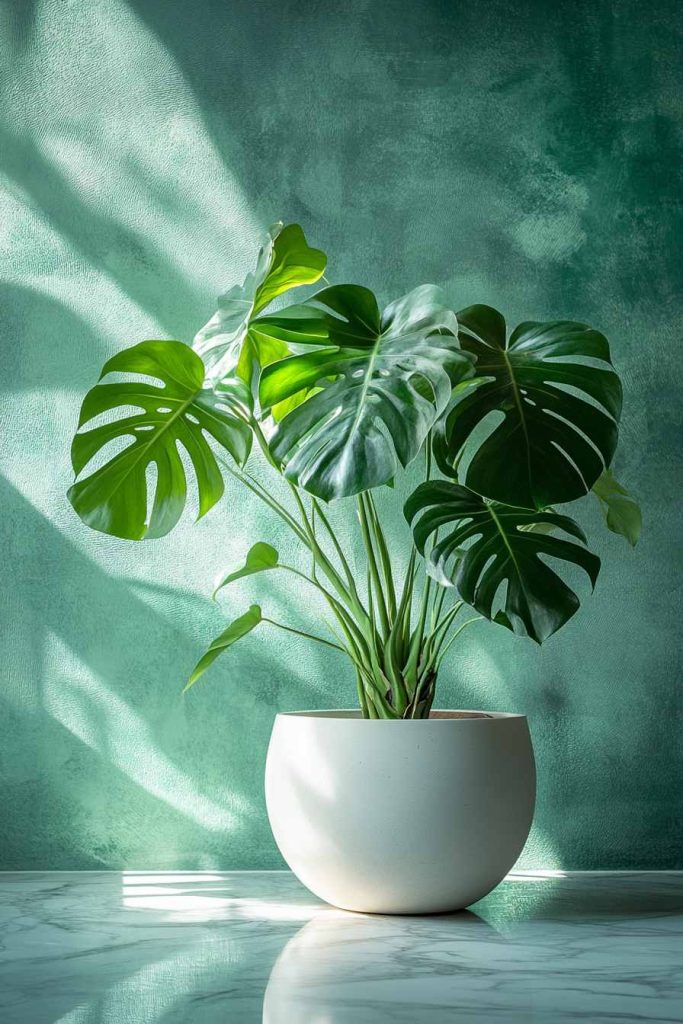
Humidity Requirements
- Prefers humidity above 60% but adapts to 40-50% indoors.
- Low humidity may cause brown leaf edges or slowed growth.
How to Increase Humidity
- Use a humidifier – The most effective method.
- Mist the leaves – Lightly, but not too often to avoid fungal issues.
- Group with other plants – Creates a natural humid microclimate.
- Place on a pebble tray – Adds moisture through evaporation.
- Keep in humid rooms – Bathrooms or kitchens (if well-lit).
With proper warmth and humidity, your Monstera will flourish, producing lush, healthy leaves year-round!
2.3 Soil Requirements
Monstera plants need well-draining soil to prevent root rot. A perfect mix includes:
- 50% potting soil (peat-based)
- 20% perlite (for aeration)
- 20% orchid bark (for drainage)
- 10% coconut coir (for moisture retention)
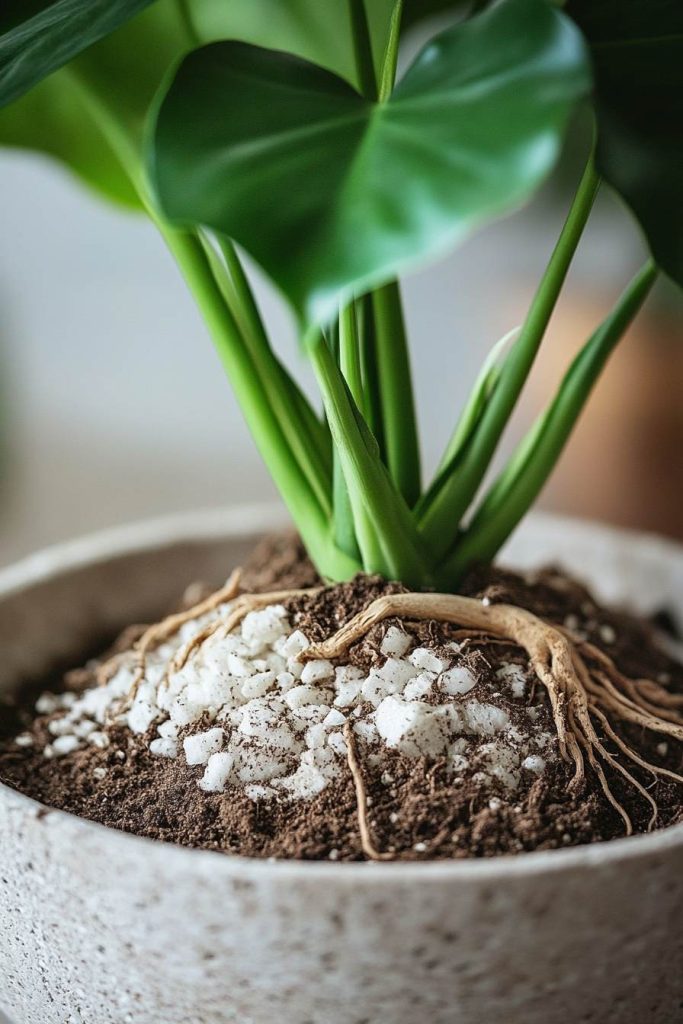
3. Watering & Fertilizing Your Monstera
3.1 Watering Schedule
Water your Monstera when the top 2 inches of soil are dry. On average:
- Spring & Summer: Every 7-10 days
- Fall & Winter: Every 2-3 weeks
Signs of overwatering: Yellowing leaves, mushy stems, and root rot.
Signs of underwatering: Wilting, dry brown edges, and curling leaves.
3.2 Fertilizing Schedule
Regular fertilization helps Monstera plants grow larger leaves, stronger stems, and vibrant green foliage. Since they are fast-growing tropical plants, providing the right nutrients ensures healthy development and fenestrations.
- Use a balanced liquid fertilizer (20-20-20) once a month during spring and summer, when the plant is actively growing.
- In fall and winter, when growth slows, reduce feeding to once every 6-8 weeks to avoid over-fertilization.
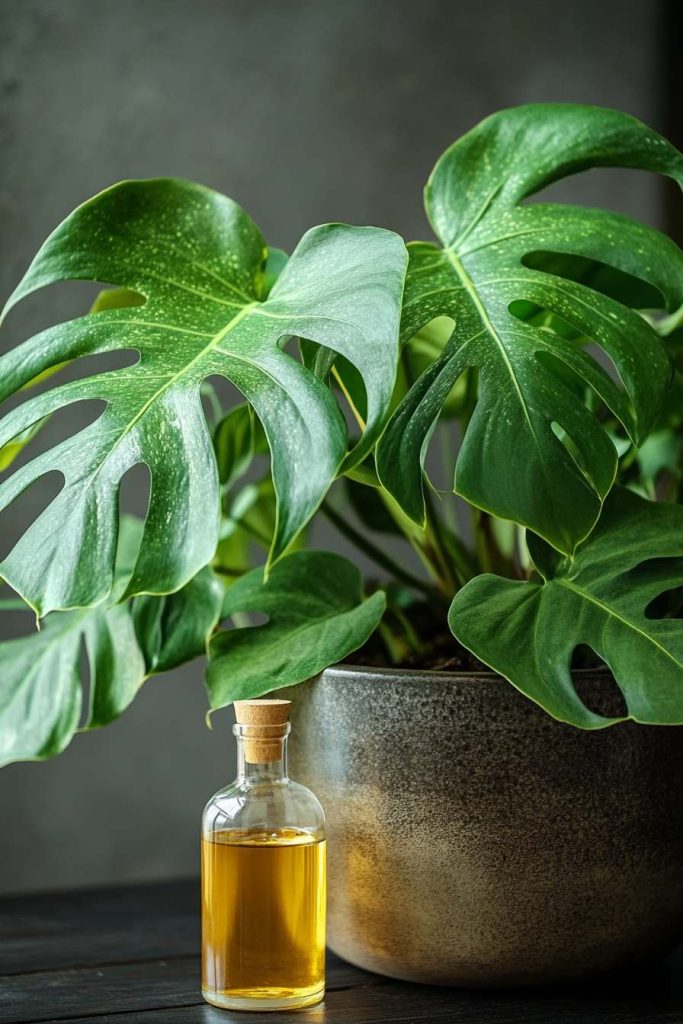
Organic Fertilizer Options
For a more natural approach, consider:
✅ Compost tea – Provides slow-releasing nutrients.
✅ Fish emulsion – Rich in nitrogen for lush foliage.
✅ Worm castings – Improves soil health and root strength.
Over-fertilizing can lead to salt buildup in the soil, causing yellowing leaves or burnt tips, so always follow recommended amounts. A well-fed Monstera will grow vibrant, healthy leaves year-round!
4. Potting & Repotting Monstera
4.1 Choosing the Right Pot
Selecting the right pot is crucial for healthy root development and to prevent overwatering issues like root rot. Ensure the pot has drainage holes to allow excess water to escape.
✅ Best pot materials:
- Terracotta – Porous, allowing soil to dry out faster, ideal for those who tend to overwater.
- Ceramic – Retains moisture slightly longer but provides good stability.
- Plastic – Lightweight and retains moisture well, suitable for drier environments.
4.2 When to Repot
Repotting is necessary to give your Monstera more space to grow and to refresh the nutrient-rich soil. Do this every 1-2 years, or when you notice:
- Roots emerging from drainage holes, indicating the pot is too small.
- Stunted growth, where the plant stops producing new leaves.
- Overcrowded or compacted soil, making it hard for water to drain properly.
4.3 How to Repot a Monstera
- Select a new pot that is 1-2 inches larger in diameter than the current one.
- Gently remove the plant by loosening the soil and carefully lifting it out.
- Shake off excess soil and check the roots. Trim any damaged or mushy roots.
- Place the Monstera in fresh, well-draining soil mix and fill around the roots.
- Water thoroughly to help the plant settle in its new home.
After repotting, keep the plant in indirect light for a few days to reduce transplant stress.
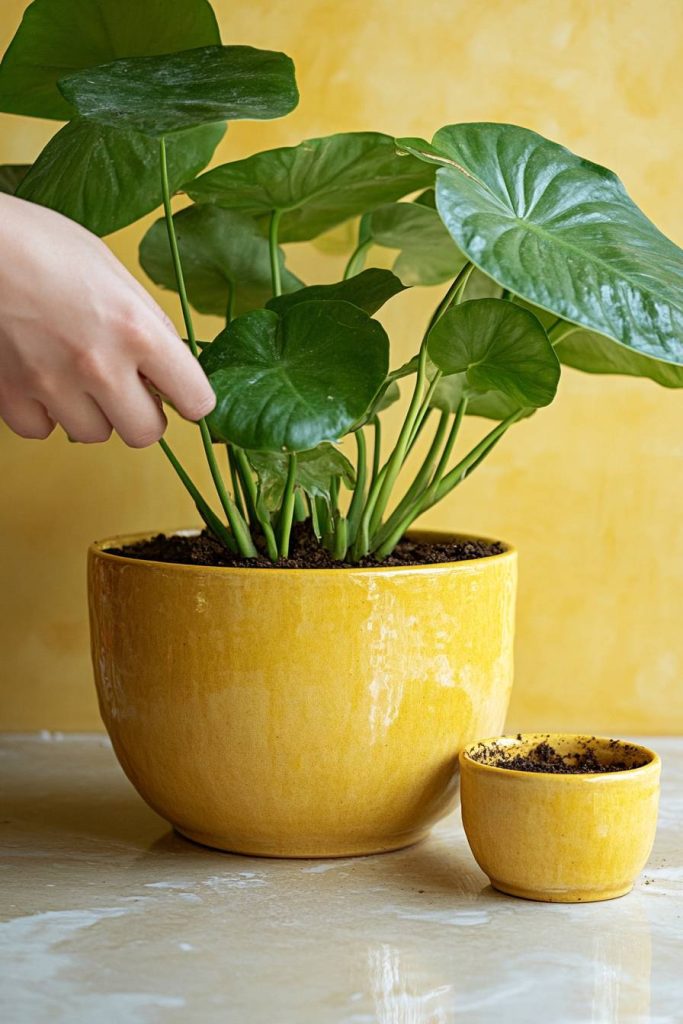
5. Pruning & Supporting Your Monstera
5.1 Pruning for Healthy Growth
Regular pruning helps maintain a healthy, bushy Monstera by removing damaged or excessive growth and encouraging new leaf production.
- Trim dead, yellowing, or damaged leaves to direct the plant’s energy toward healthier growth. Use sharp, clean pruning shears to make precise cuts near the base of the stem.
- Cut back leggy vines if your Monstera is growing too tall or uneven. This promotes a fuller, more compact shape rather than a stretched-out, sparse look.
When pruning, make cuts just above a node (the small bump on the stem where leaves or roots grow) to stimulate new growth. Avoid removing more than 25% of the plant at once to prevent shock.
Regular maintenance ensures your Monstera stays lush, vibrant, and well-shaped year-round!
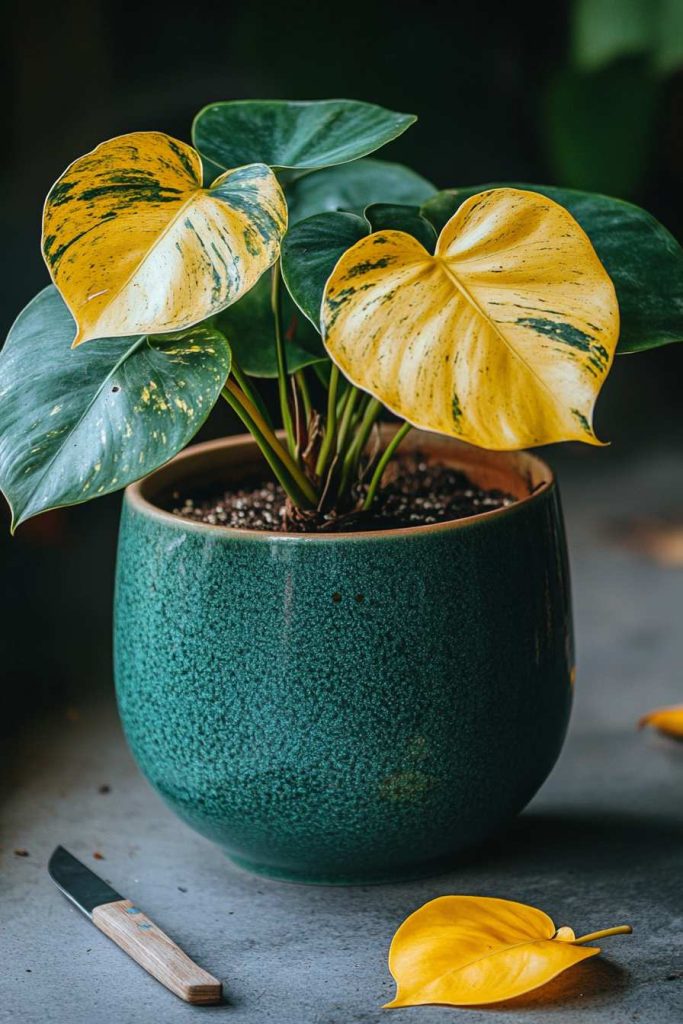
5.2 Encouraging Bigger Leaves & Fenestrations
To help your Monstera develop larger leaves with more fenestrations (natural splits and holes), mimic its natural rainforest environment by providing:
- Bright, indirect light – Place your plant near a north or east-facing window where it gets consistent, filtered sunlight. Insufficient light leads to smaller, solid leaves with fewer splits.
- High humidity (above 60%) – In dry environments, use a humidifier, mist occasionally, or place the plant near other tropical plants to create a moist microclimate.
- Support for climbing growth – Monsteras are natural climbers. Using a moss pole, trellis, or stake encourages upward growth, which leads to larger, more fenestrated leaves over time.
Providing these conditions ensures your Monstera remains lush, full, and thriving with dramatic foliage! 🌿✨
5.3 How to Propagate Monstera
Monsteras are easy to propagate, making them a great plant for sharing with friends or expanding your collection. The most common method is stem cuttings, which can be rooted in water or soil.
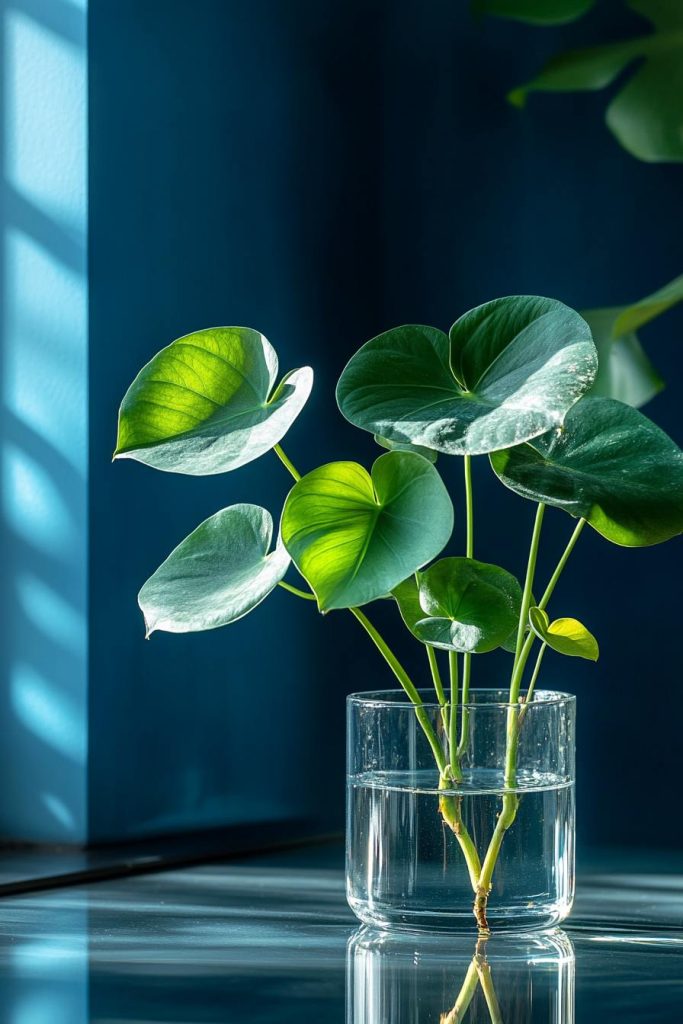
Step-by-Step Propagation:
- Cut a healthy stem just below a node (the small bump on the stem where roots form). Ensure the cutting has at least one leaf and, if possible, an aerial root.
- Choose your rooting method:
- Water propagation: Place the cutting in a jar of clean water, ensuring the node is submerged. Change the water every 3-5 days to prevent rot.
- Soil propagation: Plant the cutting in moist, well-draining soil and keep it lightly watered.
- Provide bright, indirect light and keep humidity levels high to encourage fast root development.
- Wait for roots to grow (typically 2-4 weeks), then transfer to a larger pot with nutrient-rich soil for continued growth.
6. Common Monstera Problems & Solutions
6.1 Pests
Monsteras are generally resilient, but they can occasionally attract common houseplant pests, including:
- Spider mites – Tiny, web-spinning pests that cause yellowing or speckled leaves.
- Mealybugs – White, cotton-like insects that cluster on stems and leaf joints.
- Thrips – Slender, winged insects that leave streaks or discoloration on leaves.
- Aphids – Small, sap-sucking bugs that cause curling or deformed leaves.
Solution:
- Regularly wipe leaves with a damp cloth to prevent infestations.
- Treat affected plants with neem oil or insecticidal soap, spraying both the top and underside of leaves.
- For severe cases, isolate the plant and reapply treatments every few days until pests are gone.
6.2 Diseases
Like most tropical plants, Monsteras can develop diseases, especially if overwatered or kept in poor air circulation.
- Root rot – Caused by excess moisture and poor drainage, leading to mushy roots and yellowing leaves.
✅ Solution: Repot in fresh, dry soil and trim any rotten roots. - Leaf spot disease – Appears as brown or black spots on leaves, often due to fungal or bacterial infections.
✅ Solution: Trim affected leaves and apply a fungicide or antibacterial spray.
Keeping your Monstera in well-draining soil and avoiding overwatering will help prevent most diseases.
6.3 Yellowing Leaves
If your Monstera’s leaves are turning yellow, the most common causes are:
- Overwatering – Soil stays too wet for too long, leading to root stress.
- Lack of nutrients – If not fertilized properly, the plant may lack essential minerals.
Solution:
- Adjust watering frequency, ensuring the top 2 inches of soil dry out before the next watering.
- Feed the plant with a balanced liquid fertilizer (20-20-20) once a month in spring and summer.
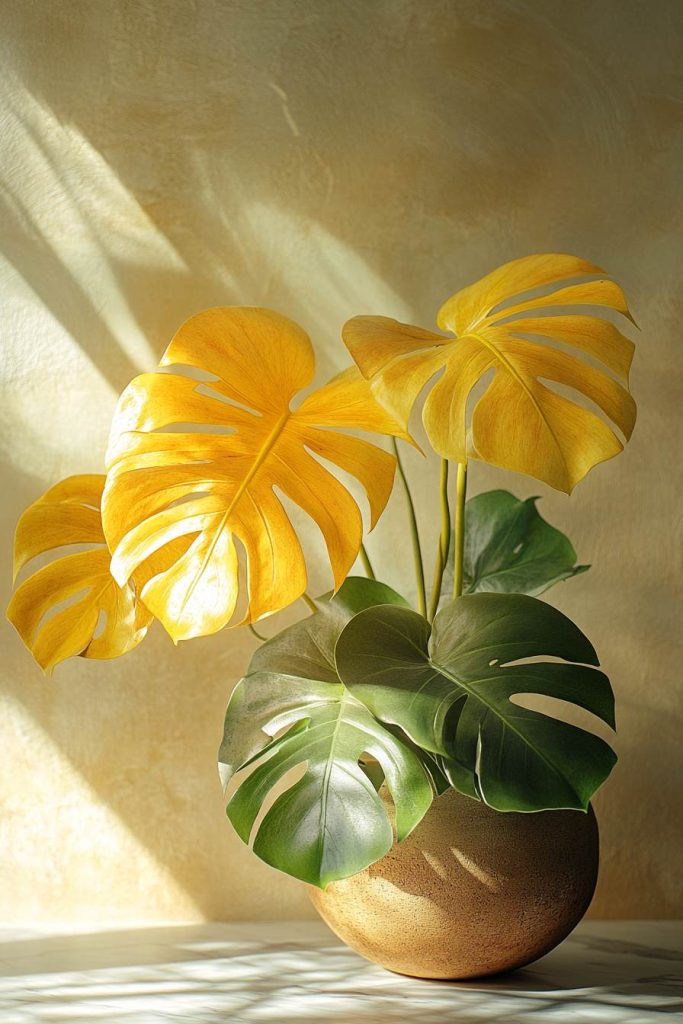
6.4 Drooping or Curling Leaves
- Drooping leaves – Usually a sign of underwatering or overwatering.
✅ Solution: Check the soil—if dry, water deeply; if soggy, let it dry before watering again. - Curling leaves – Often caused by low humidity or too much direct sunlight.
✅ Solution: Increase humidity using a humidifier or misting and relocate away from direct sunlight.
By maintaining proper watering, humidity, and lighting, your Monstera will remain healthy, lush, and vibrant!
7. Styling & Displaying Monstera Indoors
7.1 Best Places to Keep a Monstera
Choosing the right location for your Monstera ensures healthy growth while also enhancing your home’s aesthetic. Since it thrives in bright, indirect light and moderate to high humidity, consider these ideal spots:
- Living room corners – A large Monstera in a decorative floor pot creates a bold, tropical statement piece, adding greenery to modern interiors.
- Home office – Aside from its air-purifying benefits, a Monstera can bring a refreshing, creative ambiance to your workspace. Place it near a well-lit window for best growth.
- Bathroom (if bright light is available) – The natural humidity from showers helps Monsteras flourish, making them perfect for spa-like bathroom decor, as long as there’s enough indirect light.
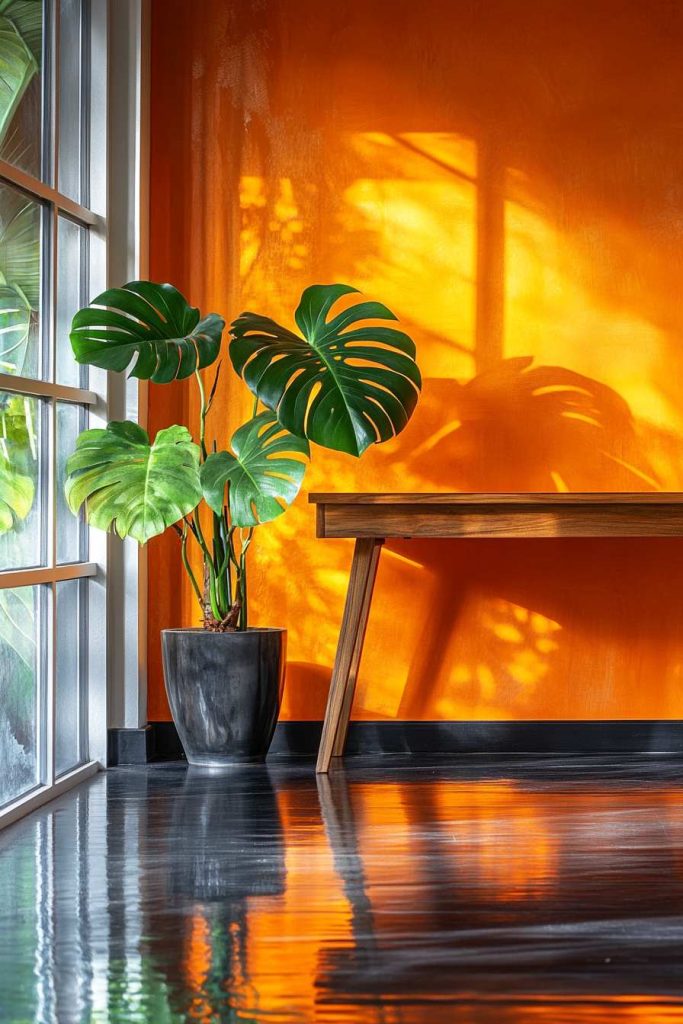
7.2 Best Ways to Display Monstera
Depending on its size and growth pattern, Monsteras can be displayed in various ways to suit your space:
- Floor pots for large specimens – A mature Monstera looks stunning in a tall ceramic or woven basket-style pot, complementing modern or bohemian decor.
- Hanging baskets for smaller varieties – Compact Monsteras, like Monstera adansonii, work beautifully in hanging planters, allowing their vines to cascade elegantly.
- Moss poles or trellises to encourage climbing – Since Monsteras are natural climbers, providing a moss pole or trellis helps them grow taller and develop larger, fenestrated leaves.
Strategically placing and displaying your Monstera not only maximizes its growth potential but also enhances your indoor decor with a fresh, tropical vibe!
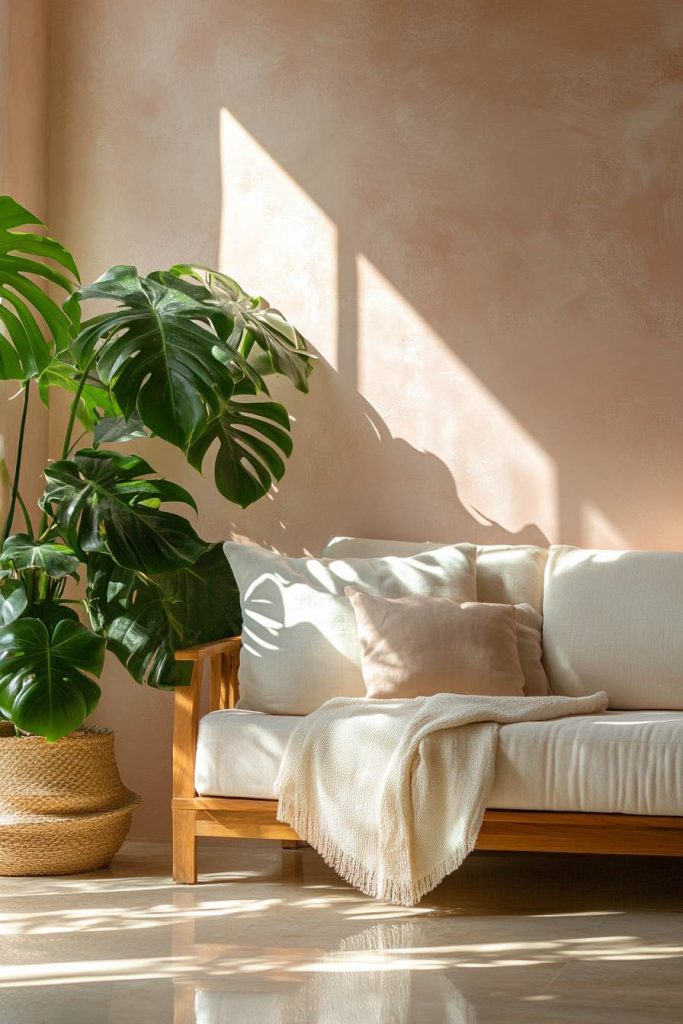
End Words
Caring for a Monstera plant is simple with the right balance of light, water, humidity, and nutrients. By following this guide, you can ensure your Monstera thrives, producing large, beautiful leaves that bring life to any indoor space.
Whether you’re a beginner or an experienced plant parent, the Monstera is a rewarding and low-maintenance plant that will continue to flourish for years!
FAQs About Monstera Care
How often should I water my Monstera?
Water once the top 2 inches of soil are dry, usually every 7-10 days.
Why is my Monstera not splitting?
It needs more light, humidity, and nutrients.
Can I grow Monstera in water permanently?
Yes, but it thrives better in well-draining soil.
Is Monstera toxic to pets?
Yes, it’s toxic to cats and dogs if ingested.



